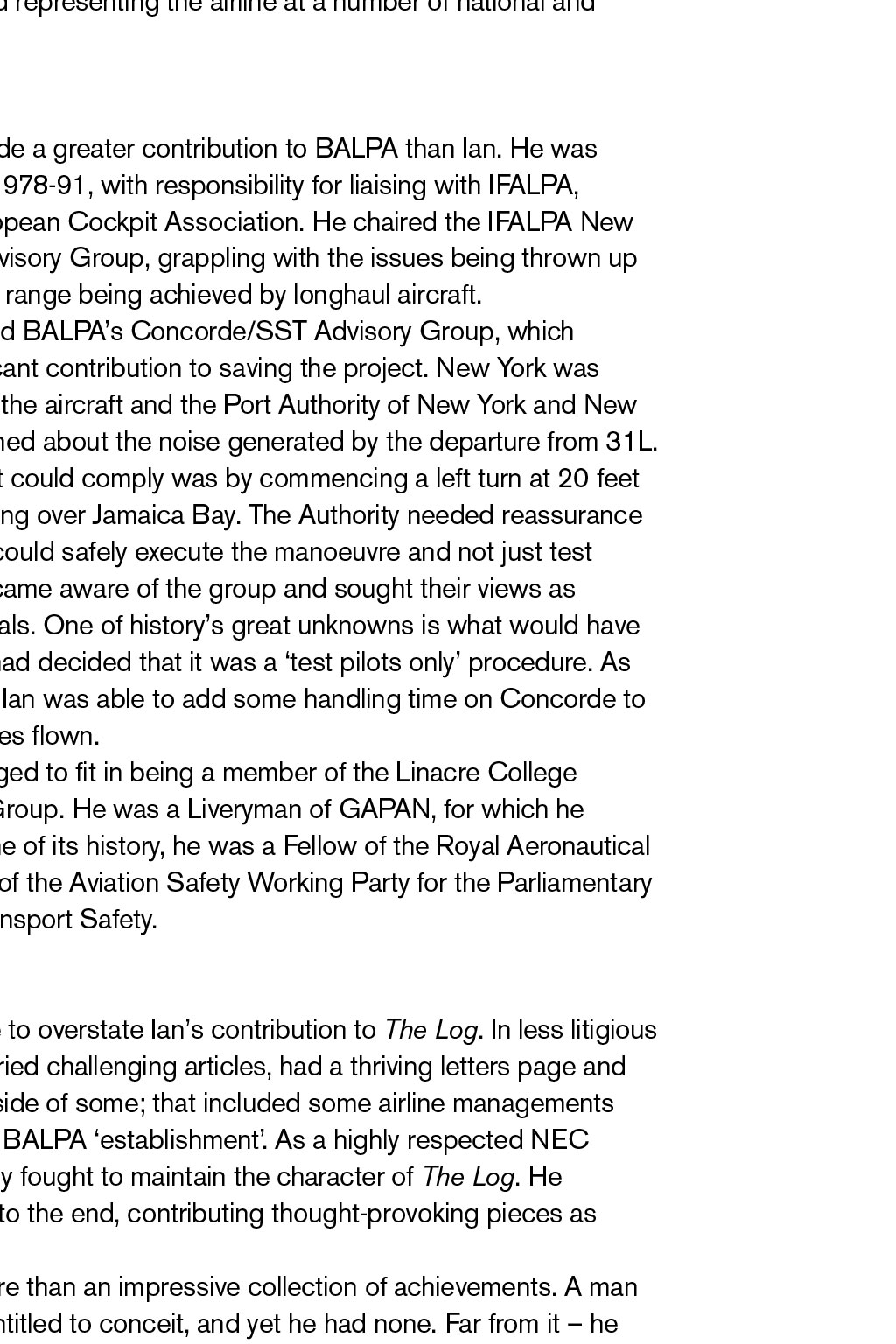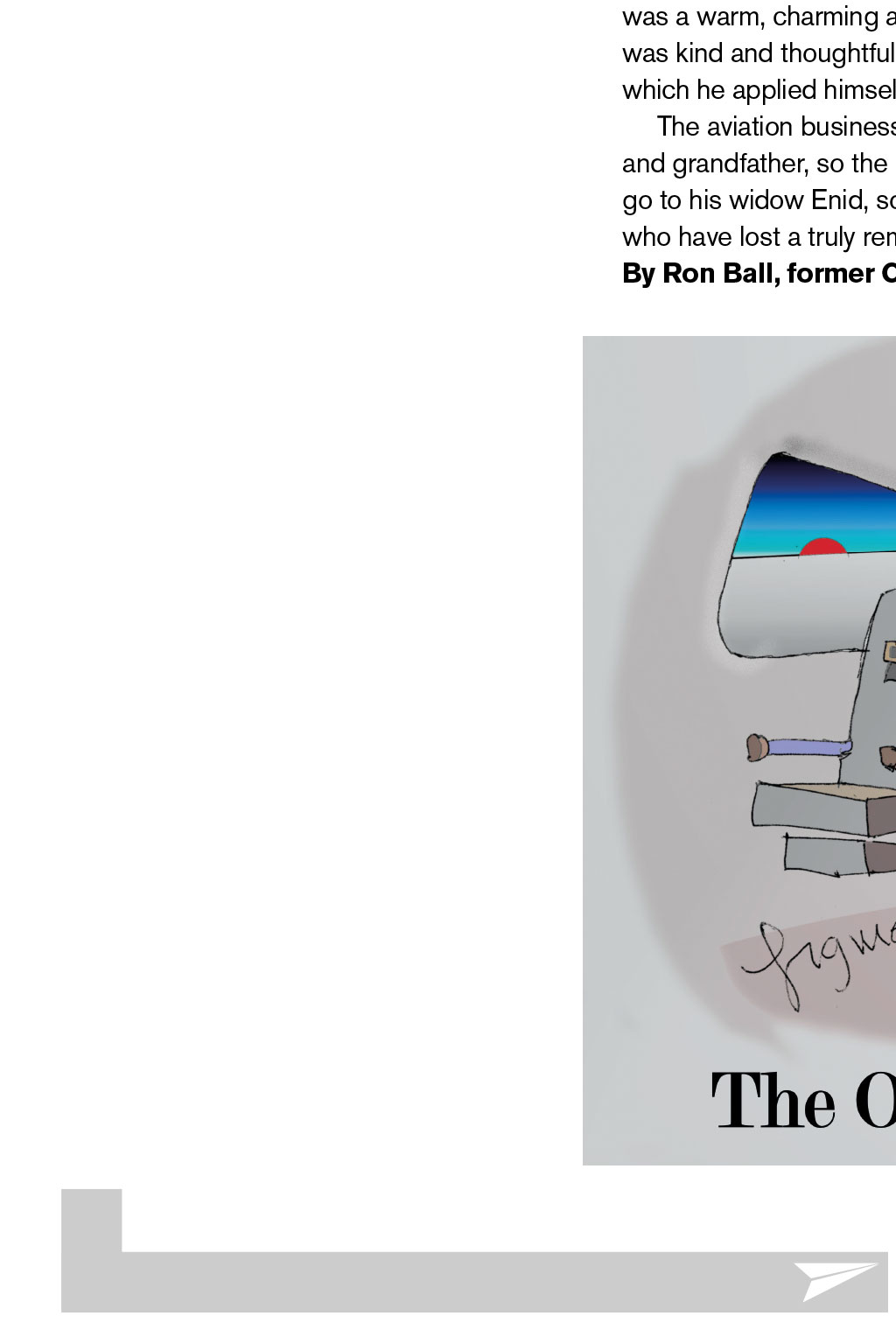
















Ian experiencing the thrills of a Tiger Moth The 12th July 1937 was a significant day in the history of aviation. A Russian development aircraft, the Tupolev ANT-25, was airborne for 36 hours on an attempted record-breaking flight from Moscow over the North Pole to San Jacinto in California. Thousands of miles away, in south London, Ian Frow was born. Ians interest in aviation started early with a gliding course as a teenager, followed by a flying scholarship. National Service followed, which turned out well for him. His flying background got him into the RAF to fly piston Provosts and the Vampire. After leaving the RAF, he obtained a commercial pilots licence and instrument rating, before joining BOAC. His first post, after a year-long training course, was as a flight navigator operating on the DC7C, Britannia, Comet 4 and Boeing 707. He progressed from there to become a PX on the 707, allowed only in the pilots seat when the aircraft was above 10,000 feet. To someone of Ians energy and abilities, being a line pilot was never going to be enough. He was appointed as a check first officer responsible for training, checking and examining his colleagues the latter role as a CAA examiner. Shortly after, he was appointed as a training first officer and instrument rating examiner/type rating examiner (IRE/TRE) on the 707 simulator. In 1972, a year after its introduction, Ian converted onto the 747 Classic. What followed was an extremely impressive career on that aircraft and its successors. After taking his command in 1976, he progressed to become both an IRE/TRE and base training captain, posts that he held until transferring onto the 747-400 when it arrived. Ian completed his British Airways career as an IRE/TRE and training standardisation captain on the aircraft. British Airways loss was Virgin Atlantics gain, where Ian enjoyed a shorter but no less distinguished career. In the eight years he was with them, he progressed from first officer to training captain with an IRE/TRE simulator qualification. He became flight technical and development manager, managing a variety of technical projects and representing the airline at a number of national and international forums. Making an impact Very few pilots have made a greater contribution to BALPA than Ian. He was an NEC member from 1978-91, with responsibility for liaising with IFALPA, Europilote, and the European Cockpit Association. He chaired the IFALPA New Long Range Aircraft Advisory Group, grappling with the issues being thrown up by the rapidly increased range being achieved by longhaul aircraft. He sat on and chaired BALPAs Concorde/SST Advisory Group, which arguably made a significant contribution to saving the project. New York was crucial to the survival of the aircraft and the Port Authority of New York and New Jersey was very concerned about the noise generated by the departure from 31L. The only way the aircraft could comply was by commencing a left turn at 20 feet radio height before turning over Jamaica Bay. The Authority needed reassurance that ordinary line pilots could safely execute the manoeuvre and not just test pilots. The Authority became aware of the group and sought their views as independent professionals. One of historys great unknowns is what would have happened if the group had decided that it was a test pilots only procedure. As a member of the group, Ian was able to add some handling time on Concorde to his impressive list of types flown. Somehow, Ian managed to fit in being a member of the Linacre College Oxford Aviation Study Group. He was a Liveryman of GAPAN, for which he wrote the second volume of its history, he was a Fellow of the Royal Aeronautical Society, and a member of the Aviation Safety Working Party for the Parliamentary Advisory Council for Transport Safety. Part of the team It would not be possible to overstate Ians contribution to The Log. In less litigious times, the magazine carried challenging articles, had a thriving letters page and could be a thorn in the side of some; that included some airline managements and not infrequently the BALPA establishment. As a highly respected NEC member, Ian successfully fought to maintain the character of The Log. He remained on the Board to the end, contributing thought-provoking pieces as The Old Git. Ian was so much more than an impressive collection of achievements. A man with his CV would be entitled to conceit, and yet he had none. Far from it he was a warm, charming and modest man with a very keen sense of humour. He was kind and thoughtful, and had the Midas touch of improving everything to which he applied himself. Not least, he was a trusted and loyal friend. The aviation business has suffered a loss. Ian was a dedicated husband, father and grandfather, so the Frow family has suffered a greater loss. Our condolences go to his widow Enid, son Neil, daughter-in-law Kate and granddaughter Isobelle, who have lost a truly remarkable man. By Ron Ball, former Chief Editor, The Log O B ITUARY Ian Frow, 1937-2021